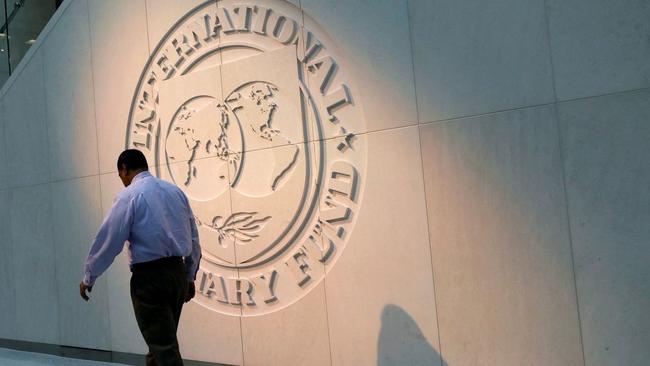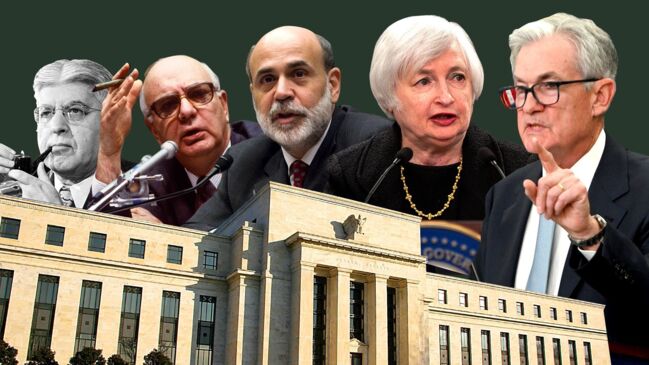Global outlook to help give economy a lift, says IMF
Australia’s economy this year will be buoyed by an improving global outlook, after the IMF upgraded world growth despite ‘persistent’ inflation.

Australia’s economy this year will be buoyed by an improving global outlook, after the International Monetary Fund upgraded world growth even as it warned that “the battle against inflation is still not done”.
In an update to its April World Economic Outlook, the Washington-based organisation said the global economy would expand by 3 per cent in 2023 – “modestly higher” than the 2.8 per cent forecast three months earlier.
Evidence of a more resilient than feared world economy this year will help to cushion the increasingly dire outlook for Australia, with analysts predicting growth will slow to a standstill in the back half of 2023 as cost-of-living pressures and soaring borrowing costs bite.
The IMF report comes ahead of Wednesday’s key June quarter consumer price report, with a number of analysts saying inflation will have to come in well shy of consensus forecast for a 1 per cent quarterly increase, or 6.2 per cent annually, to prevent a 13th Reserve Bank cash rate hike at next Tuesday’s meeting.
While more hopeful, the IMF report noted that the improved 3 per cent forecast “remains weak by historical standards”, and would represent a marked deceleration from last year’s 3.5 per cent lift in world real GDP.
Still, the world economy has proved more resilient than feared over recent months, the report found, and IMF chief economist Pierre-Olivier Gourinchas said that “the signs of progress were undeniable”.

Jim Chalmers, a day after confirming the budget surplus for the past financial year would come in above $20bn, said the rosier set of forecasts did not fundamentally alter the global economic environment.
“The IMF highlights the rough and tricky road ahead for the world economy, with global growth forecast to slow this year and next,” the Treasurer said.
“The report shows that while global inflation is moderating, it’s remaining higher than we’d like for longer than we’d like.
“The pressures coming at us from abroad, along with higher interest rates, will inevitably see growth in our own economy slow considerably – which is what Treasury and the Reserve Bank both forecast,” Dr Chalmers said.
“In the face of ongoing global challenges, the Albanese government’s economic plan is all about making the budget more responsible, our economy more resilient, and providing responsible cost-of-living relief that doesn’t add to inflationary pressures.”

The updated outlook, which did not include forecasts for the Australia, said the US economy would grow by 1.5 per cent through 2023 – an upgrade of 0.2 percentage points – versus the previous year’s 2.7 per cent increase.
There was a 0.1ppt increase in the projections for real GDP growth in the Euro area to 0.9 per cent, still a major deceleration from 3.5 per cent in 2022.
The United Kingdom received the largest upgrade, with the IMF predicting the British economy would grow by 0.4 per cent in 2023, rather than contract by 0.3 per cent.
With the World Health Organisation calling an official close to the Covid-19 pandemic in May, the IMF economists pointed to the return of supply chains to pre-pandemic health.
The sharp fall in energy and food prices sparked by Russia’s invasion of Ukraine has allowed global inflationary pressures to ease more quickly than anticipated, Mr Gourinchas said.
The IMF projected world inflation would fall from 8.7 per cent last year to 6.8 per cent this year, a 0.2 percentage point downward revision from the April outlook report, and 5.2 per cent in 2024.

“Stronger growth and lower inflation than expected are welcome news, suggesting the global economy is headed in the right direction,” Mr Gourinchas said.
“Yet many challenges still cloud the horizon, and it is too early to celebrate,” he said.
The IMF’s top economics official said interest rates globally had moved into “contractionary territory”, echoing language in recent RBA board minutes to justify the decision to hold rates at 4.1 per cent in July.
Mr Gourinchas noted that monetary policymakers’ preferred underlying measures of inflation “remains well above central banks’ targets, and is expected to decline gradually from 6 per cent this year to 4.7 per cent in 2024 – a 0.4 percentage points upward revision”.
“More worrisome, core inflation in advanced economies is expected to remain unchanged at a 5.1 per cent annual average rate this year, before declining to 3.1 per cent in 2024,” Mr Gourinchas said.
“Clearly, the battle against inflation is not yet won.”







To join the conversation, please log in. Don't have an account? Register
Join the conversation, you are commenting as Logout